For many Vajrayana Buddhists, nothing is more difficult than generating (creating) a detailed, stable and complete visualization. Yet, at the same time, it is vital, as explained by Kunkhyen Tenpe Nyima:
This is one of the primary functions of the development stage; it is a unique method that allows one to practice calm abiding by focusing on the mind of the deity
Although some teachers reassure us that our skills will increase with experience — and in the mean time to just “know” the deity is there — never-the-less, visualization is so fundamental to the advanced path of Generation Deity Practices, it’s hard to be satisfied with only a glimpse of our Yidam. Visualization is so important that Guru Rinpoche advises us to have “a well-made painting of the yidam deity and place it in front of you.” [1]
Traditionally, if we have difficulties visualizing, this is due to “obstacles” on our path (and in our mindstream). This is one of the reasons for initiation and instruction from the teacher. The great Lotus Born Padmasambhava put it this way:
“Whether you meditate on the deity in front of you or meditate yourself as the deity, after you have received the masters oral instructions, the master should have given you, the disciple, his blessings and protected you against obstructing forces.”
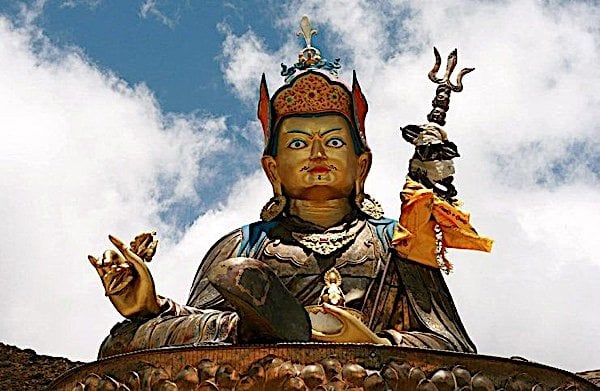
Guru Rinpoche Padmasambhava statue.
Problems with visualization
Visualization is especially diffficult for busy, modern people, with unsettled minds. H.E. Zasep Rinpoche, in a video teaching on visulizing deity, said:
“Everybody has the same problems. Everyone has the same type of difficulties, struggling. But, this is practice. This is the path. This is how it is. Don’t blame yourself, don’t blame anybody, just keep practicing. This is how everybody has to learn.”
[Full video advice follows Guru Rinpoche teachings.]
Practical advice from Padmasambhava, the great Guru Rinpoche
The advice from the Lotus Born Padmasambhava, quoted below in translated English, is from His oral instructions to Lady Tsogyal, herself a Dakini. Clearly, then, we can certainly rely on this precious advice. In his oral instructions, He advised Lady Tsogyal, to hone Her skills in this way (after we receive the blessings from our teacher):
“Next, sit on a comfortable seat and be physically at ease. Take a well-made painting of the yidam deity and place it in front of you. Sit for a short time without thinking of anything whatsoever, and then look at the image from head to foot. Look again gradually at all the details from the feet to the head. Look at the image as a whole. Sometimes rest without thinking
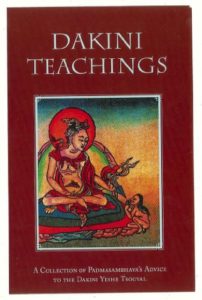
Dakini Teachings: Padmasambhava’s oral instructions to Lady Tsogyal.
about the image and refresh yourself. Then in this way, look again and again for a whole day.
“That evening take a full night’s sleep. When you wake up, look again as before. In the evening, do not meditate on the deity but just rest your mind in the state of nonthought.
“Following this, the deity will appear vividly in your mind even without your meditating. If it does not, look at its image, close your eyes and visualize the image in front of yourself. Sit for as long as the visualization naturally remains. When it becomes blurry and unclear, look again at the image and then repeat the visualization, letting it be vividly present. Cut conceptual thinking and sit.”
Five kinds of experiences in visualization: Guru Rinpoche
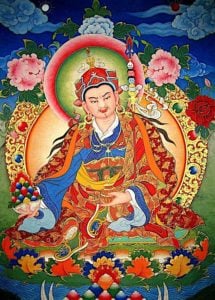
Guru Rinpoche.
“When meditating like this you will have five kinds of experiences: the experience of movement, the experience of attainment, the experience of habituation, the experience of stability, and the experience of perfection.
Experience of Movement
“When your mind does not remain settled at this time and you have numerous thoughts, ideas, and recollections, that is the experience of movement. Through that you approach taking control of the mind. This experience is like a waterfall cascading over a steep cliff.”
Experience of Attainment
“Then when you can visualize the deity for a short time with both the shape and color of the deity remaining vivid and clear at the same time, that is the experience of attainment. This experience is like a small pond.”
Experience of Habituation
“Following this, when the deity is clear whether you mediate upon it from a long or short distance, and when it remains for a sixty of your session without any occurence of gross thoughts, that is the experience of habituation, which is like the flow of a river.”
Experience of Stability
“Next, no thoughts move and you are able to maintain the session while clearly visualizing the deity. That is the experience of stability that is like Mount Sumeru.”
Experience of Perfection
“Following this, when you can remain for a full day or more without losing the vivid presence of the deity’s arms and legs even down to the hairs on its body and without giving rise to conceptual thinking, that is the experience of perfection.
Instructions to Lady Tsogyal from the Lotus Born
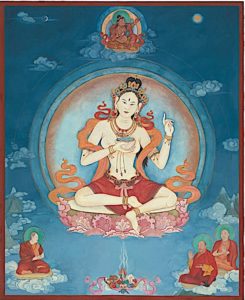
Lady Tsogyal from a tangkha by Laura Santi.
“Practioner, apply this to your own experience!
“If you sit too long with an unclear visualization of the deity, your physical constitution will be upset. You will become weary and consequently unable to progress in your concentration. You will have even more thoughts, so first refresh yourself, then continue meditating.
“Until you attain a clear visualization, do not meditate at night. In general it is important to visualize in short sessions. Meditate while there is sunlight, when the sky is clear, or with a butter lamp. Do not meditate when you just have woken up or when you feel sluggish or hazy.
“At night, get a full night’s sleep and meditate the next day in eight short sessions.
“When meditating, if you leave the session abruptly, you will lose concentration, so do it gently.
“When your visualization becomes vivid the moment you meditate, you can also practice at nighttime, during dusk, and at early dawn.
“In general do not weary yourself. Focus your mind on the visualzation, grow accustomed to it with stability and visualize the complete form of the deity.”
Video visualization advice from H.E. Zasep Rinpoche
In a short video, H.E. Zasep Rinpoche offers suggestions for students on visualization:
Excerpt from video teaching:
It helps achieve good visualizations faster… if you have strong faith, devotion and passion. You have to have a passion. Some people have this passion. Some people don’t have the passion, but can develop it.
When I say passion, it doesn’t mean attachment. It’s more like devotion. Devotion, joy and excitement. You can call it passion.
So, when you have that, it’s like a child, a little child, fantasizing about toys. You go to the toy shop, and all you think about are toys. Like a little boy with his toy truck.
Automatically, boom, your mind is gone. Drawn in. Because you want this, you like this, you are so excited. Yogis, or Yoginis, should have this kind of excitement or passion.
Advice on Visualizing the Deity from Kunkhyen Tenpe Nyima
“Start out by placing a painting or statue before you, using one made by a skilled artisan and with all the appropriate characteristics. Next, arrange offerings before it an practice the preliminaries. You can do the latter in a brief form, or a more etensive one; either is acceptable…” [2]
“Once this is finished, gaze at the painting or statue placed before you. Then close your eyes and visualize the image immediately, transferring it to your own body. Train by alternating between these two steps. Once you’ve gotten used to the visualization, you can refine your ability by changing its size, increasing or decreasing the number of figures, visualizing the central deity and then the retinue, and so forth. You can alternate periods of simultaneously visualizing the complete form of the deity with periods where you only focus on certain parts or ornaments.
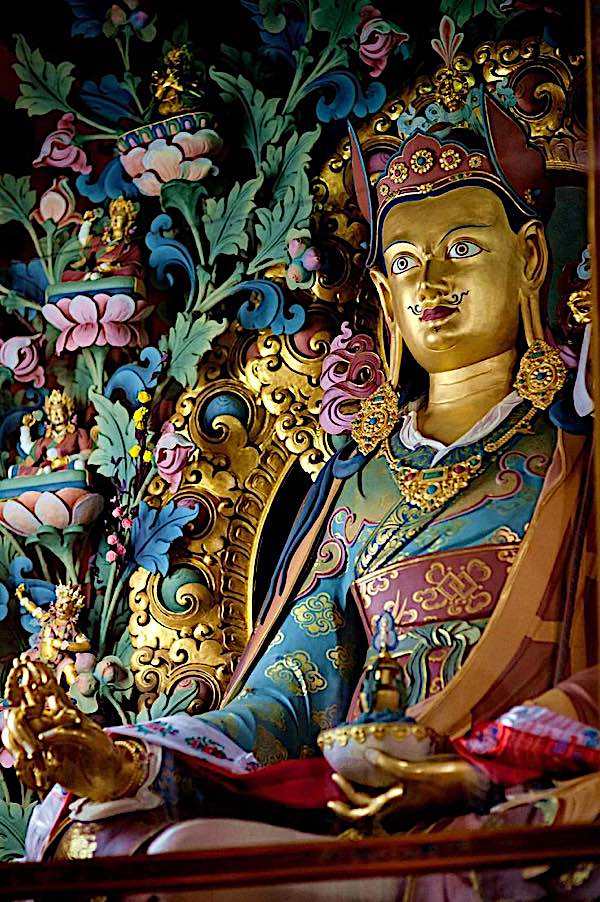
Guru RInpoche statue.
“Whichever you do, start out by focusing solely on the central deity. Starting at the tip of its crown and working your way down to the lotus seat, try to develop a clear visualization of each element: the color of its body, its face, hands and ornamentation, its clothing, the pupils of its eyes, the shape of its arms and legs, the appearance of the marks and signs, the radiation and absorption of light rays, and so on… work at visualizing all of these in minute detail.
The figure you are visualizing should not be a corporeal entity. It shouldn’t be flat like a painting or protrude like a carving, in other words. On the other hand, it should not be a mindless entity either, like a rainbow. Rather, it should be clearly defined in every respect — its front and back, left and right sides, proportions and so forth. Yet at the same time it should be devoid of any sense of materiality…

“The term “clear appearance” refers to the point at which every aspect of the supporting and supported mandala circles arise in your mind with a sense of vivid clarity. This is one of the primary functions of the development stage; it is a unique method that allows one to practice calm abiding by focusing on the mind of the deity.”

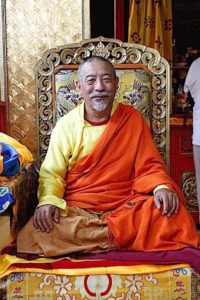
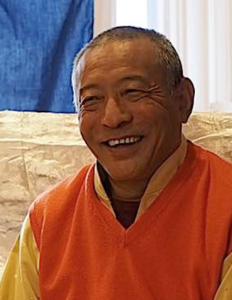
Nenhum comentário:
Postar um comentário